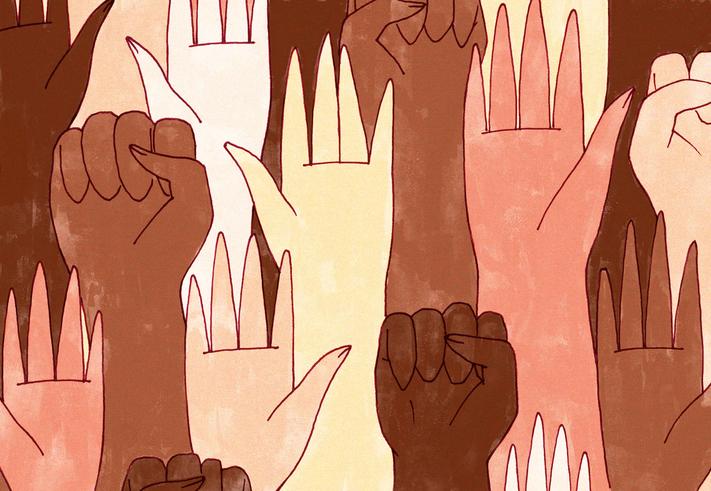
Equity without whiteness: what leaders get wrong in pursuit of an equitable campus

Equity has become part of the leader lexicon in higher education in recent years. But few leaders or equity advocates explicitly name whiteness as a target of analysis and intervention in their equitable institutional transformation pursuits.
Whiteness can be defined as the prevailing system (comprising structures, norms, ideologies and practices) that sets the terms and conditions for continued oppression within the hegemonic global social order. Through the adoption of racial hierarchies, anti-Black perspectives and the white gaze, whiteness is valorised, normalised and protected. Within this oppressive system, whiteness represents the structural status quo designed to uphold hierarchy, maximise profits and centralise resources and decision-making power among an elite few.
- The importance of Black spaces in white academia
- How to train university staff to become anti-racist agents of change
- What will your anti-racist university look like?
Similar to Eduardo Bonilla-Silva’s notion of “racism without racists” and Shaun Harper’s “race without racism”, we propose that higher education leadership has advanced the idea of equity without whiteness. This reflects a rhetorical and reformist desire to advance equity while avoiding a structural confrontation of how whiteness influences the leadership process and affects institutional outcomes.
In our book Higher Education Leadership: Challenging Tradition and Forging Possibilities, we illuminate the consequences of “equity without whiteness” by placing emphasis on the examination of whiteness in higher education leadership – how it manifests and the implications of its manifestation when pursuing equity. We explore how whiteness is upheld in higher education leadership through specific roles, tools and protective strategies.
For instance, senior administrators often engage in oppressive decision-making and communication strategies rooted in normative white behaviour (ie, whiteness as professionalism and niceness). Leadership communications are carefully crafted in ways that promote neutrality rather than explicitly naming and challenging anti-Black perspectives and practices. Efforts to consolidate power and decision-making authority allow higher education leaders to bypass norms of shared governance and collaboration with diverse stakeholders.
In the book, we outline some recommendations for how leaders can meaningfully grapple with and challenge whiteness in their equitable institutional transformation work. Here are just a few:
Placing people over profits
Whiteness is a system that prioritises profits over people. To truly advance equity, leaders need to think about the inverse: placing people over profits. This new value system must focus on the humanisation of systemically disadvantaged groups, whose wants, needs and desires are often marginalised to instead advance white supremacist and capitalist interests. A recent op-ed by University of Wisconsin-Madison professor Xueli Wang offers some tangible ways to advance more humanising practices in higher education, which also hold great promise for equitable institutional transformation.
Relinquishing power and diminishing hierarchies
Whiteness holds power as a system because of its unwavering commitment to upholding hierarchies in all corners of life and the global social order. As such, higher education leaders must make conscious efforts to diminish hierarchies and to share power and resources in order to make equitable transformation possible.
Leaders must be willing to share power with people like local community members, marginalised staff, faculty and students. Environments must be created for these individuals to feel that their perspectives will be valued in the decision-making process and that accountability measures will be implemented to ensure equitable transformation.
Revisiting policies and politics
Whiteness is largely an invisible force, going unchecked at universities globally. We suggest that leaders examine their existing policies and guiding political ideologies deeply.
For instance, what political ideologies are guiding student activism policies on campus? Is student activism viewed on your campus as a political engagement activity, an accountability check and a way to push for equitable institutional transformation at the hands of concerned students? Or are you viewing it as a disruptive activity?
Another example is hiring. Is compositional diversity being used as a proxy for equity? Or are you carefully vetting the politics and stances of new hires concerning anti-blackness, white supremacy and other pressing social issues?
If, at any point of reflection, leaders find themselves solely concerned with compositional diversity and peace and order on campus, odds are their policies and politics are maintaining a status quo rooted in whiteness. Leadership is not an apolitical process.
Reading beyond leadership theory and the field of higher education
Throughout the book, we point to the hard-to-miss fact that leadership perspectives are mainly written by white authors, especially white men. If leaders are serious about advancing equitable institutional transformation, they must read beyond traditional leadership studies and the field of higher education. Black feminist thinkers, political theory and grassroots organising guided many aspects of our own book’s theoretical direction. We suggest that leaders explore these areas to guide their equitable institutional transformation pursuits. Two recommendations we have are Redeeming Leadership: An Anti-Racist Feminist Intervention by Helena Liu and Freedom Dreams: The Black Radical Tradition by Robin D.G. Kelley.
Higher education leaders, from senior executives to grassroots activists, seeking to foster equitable organisational transformation must dedicate time and energy to examining and disrupting the system of whiteness. The strategies described above offer practical action steps that both individuals and organisations can take to initiate and sustain this process of equitable transformation.
Jordan Harper is an assistant professor of higher education and student affairs in the department of advanced studies, leadership and policy at Morgan State University. Rozana Carducci is an associate professor and graduate director of the master’s of higher education programme at Elon University. Adrianna Kezar is a professor of higher education at the University of Southern California and the director of the Pullias Center for Higher Education.
Higher Education Leadership: Challenging Tradition and Forging Possibilities is published by Johns Hopkins University Press.
If you would like advice and insight from academics and university staff delivered direct to your inbox each week, sign up for the Campus newsletter.
Additional Links
For more resources on this topic, see our spotlight on how universities can boost staff diversity.


